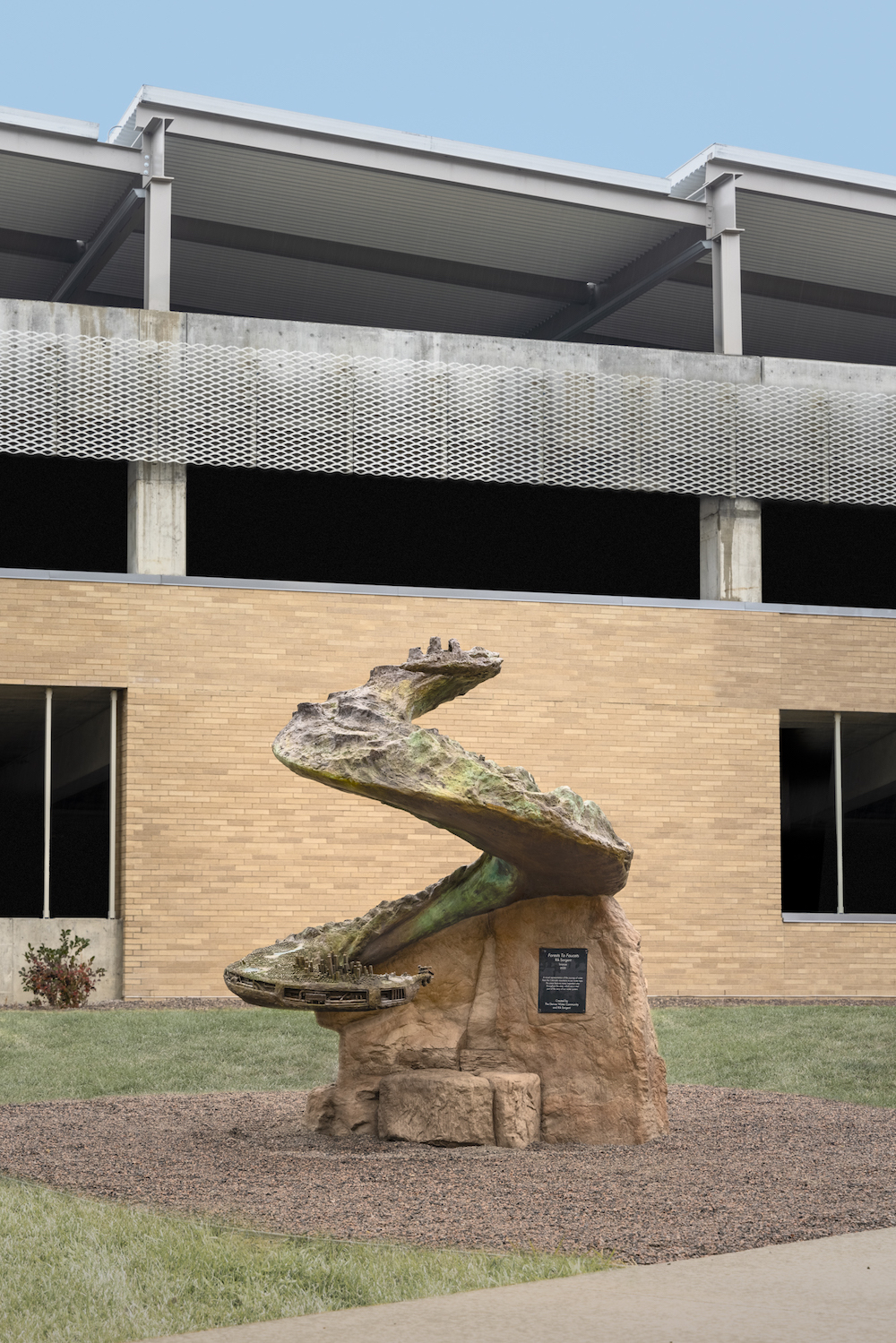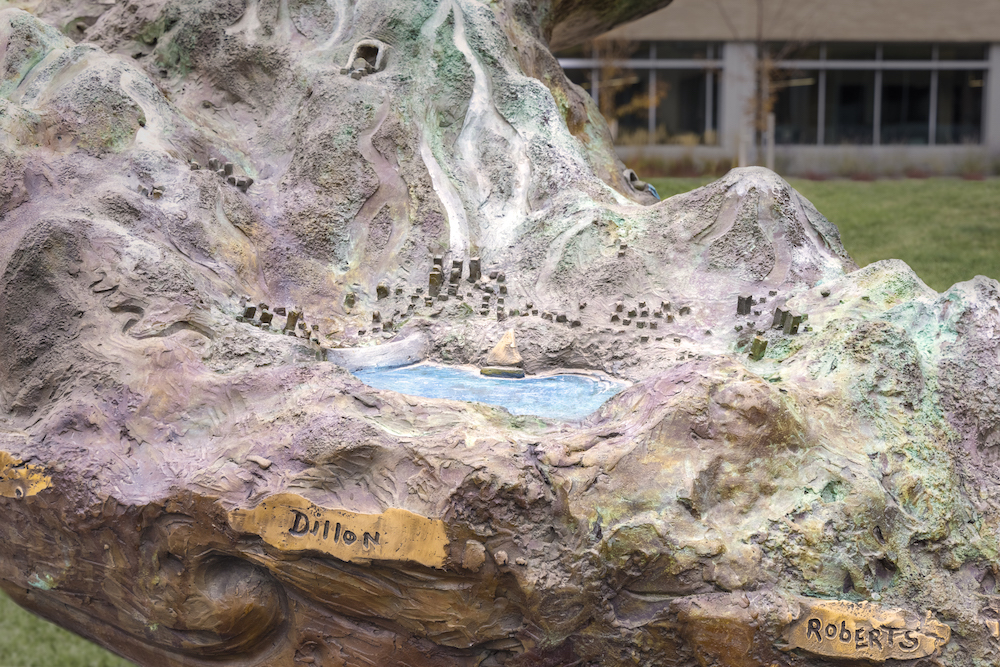Martha Weidmann of NINE dot ARTS shares how companies are leveraging art to boost morale as employees finally begin to return to the office.

For over two years, companies have had to adjust, pivot and in some cases scramble, to create work from home arrangements in the wake of the pandemic. Now, with approximately 50% of business leaders wanting employees back in the office, organizations must identify new ways to entice employees back to the office, boost morale and reignite their company cultures.
As the return to the office trend continues, it is essential that organizations reinvest in their physical office space, and specifically prioritize collaborative areas that can maximize employee engagement.
One of the best ways to do this is by incorporating art into a workplace. According to a recent report, the vast majority of people see art as a way to create unique, memorable experiences that improve the quality of life for those who use a space. Regardless of the industry, art can create community and a sense of place for those feeling lost or uneasy about returning to the office environment.
Here are three art trends that organizations can implement to improve employees’ experiences while elevating their morale and company culture.

Use Art to Communicate Company Values
Art with impact has to be more than just a decorative afterthought. Rather, art should be chosen intentionally to produce distinct experiences and reflect a company’s brand values.
In the recent report, 79% of respondents said buying and installing a permanent art collection is a way to align with and build a space’s brand. Art can bring a brand to life, crafting a meaningful, visual story about the values of an organization.
Not only does art help communicate a brand; it can also communicate company and community values to the greater public. As Chad McWhinney, CEO and Co-Founder of McWhinney says, “Art and culture allow us to honor a brand, a place and a story.”
Take for instance the impact of diversity, equity, inclusion and belonging (DEIB) initiatives. Discussed across every job sector, many companies are navigating how best to communicate and live up to their DEIB commitments in authentic and purposeful ways.
One method is to invest in art that reflects these values, which also equates to outright good business. In fact, over 80% of people we surveyed believe celebrating diversity, equity and inclusion is an important part of a successful business and 70% of people believe that art’s goal is to build social and cultural capital.
When selecting art for your office space, ensure the collection represents artists from diverse backgrounds and walks of life. Even better if they are representative of your employees and/or the constituents your company serves. As Sarah McGarry of Stantec says, “Art and social impact and community impact are huge. This is where [you] can tell a story that is supportive of different cultures and make a message of it.”
Art’s ability to convey the value of diversity in your organization is just one example of communicating your brand’s story and ethos. Aligning your company’s core principles to the space your employees inhabit during the workday will help them better reconnect to your mission as they return to the office.

Create Shared Purpose and Experiences through Art
As the world begins to recover and reopen post-pandemic, people will be seeking meaningful experiences and authentic interactions. Ultimately, we all want to remember that we are connected to something larger than ourselves.
As you welcome employees back into the office, aim to create a sense of purpose in both your office design and your engagement activities. For example, at Denver’s Block 162, the amenities-rich terrace area includes 10 multidisciplinary artworks made primarily by Colorado artists, cultivating a spirit of locality while providing employees with a comforting space to interact. By weaving art into the corridors, amenity spaces, and even the fitness center, Block 162 elevates expectations of the corporate office environment in a way that entices employees back to work.
Additionally, for Denver Water’s new 35-acre campus, employees helped artist Rik Sargent mold forests, animals, and water systems into the clay model of his “Forests to Faucets” sculpture. This co-creation allowed employees to feel ownership, excitement and pride for the new artwork and their company’s overall mission of sustainable operations and stewardship.
Ultimately, when considering return to office strategies, remember to focus on the person over the employee. Consider the office arrangements and activities that will evoke meaning and give them something to look forward to upon their return.

Amplify Art with Impact
One way to create a unique sense of place and purpose for employees is through the use of “big” art. Original artwork, large scale murals and sculptures can all create a compelling presence – especially in an office space where such installations may not be typical. “Big” art can foster conversation and even become a point of pride for employees.
Further, “big” art lends itself toward open, collaborative spaces which allow for safe social distancing as employees return to work. Integrating new social parameters into the layout and flow of a space leads to a more hospitable, engaging environment that adheres to all levels of comfort in this new normal.
Luckily, most organizations don’t have to look far for “big” art moments. Even unexpected public spaces can become an artist’s creative canvas, from a parking garage to a rooftop. These larger than life installations can even be viewed from a distance, distinguishing your office space as a memorable landmark and supporting wayfinding for employees and visitors.
Take for instance the UNC Charlotte Marriott Conference Center. The collection features a 30-foot high tapestry-like mesh mural as well as two 7-foot tall sculptures and several other large, mixed-media pieces. It utilizes local artists and UNCC students and faculty to narrate the story of the city and demonstrate a commitment to the local community. Its “big” art is also a major draw for visitors looking to experience both Charlotte’s historic past and its opportunity-rich future.
Public spaces filled with artful moments can improve employee wellbeing, especially considering that public art has been found to improve public health, increase belonging and reduce the feeling of isolation. Beyond being visually captivating, large scale artworks in multifunctional spaces can help decrease stress and reinforce a shared identity.

Make Art a Core Pillar of Your Return to Office Plans
As organizations prioritize in-person work requirements, many employees are left with mixed emotions. To appease these feelings, companies should pay careful attention to the people of their organization and look for meaningful ways to bolster their spirits. Particularly, they should strive to create an enticing environment that is safe, welcoming, and connected to the company’s brand values.
Art is an integral element in achieving this type of environment. Over 90% of people say art installations elicit positive work satisfaction, helping to transform an ordinary office into a place for memorable and fulfilling experiences. Ultimately, art can help businesses turn return-to-office challenges into culture-strengthening opportunities, meanwhile boosting business and employee morale.


Isn’t it amazing what all art can do for a space and the people who occupy that space?